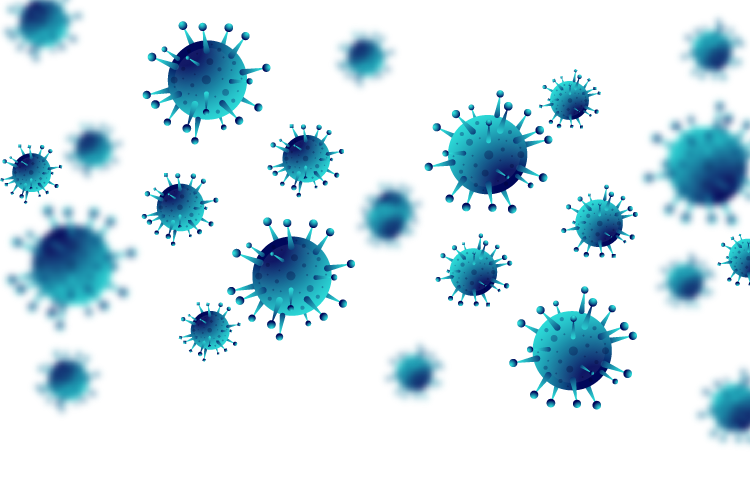
Lessons from the COVID-19 pandemic
A simulation with 11 million Belgians: the individual-based model
In an individual-based model, each individual of a population--in this case everyone in Belgium--is assigned to a family, a school or a type of workplace, etc., based on available figures on school enrollment and employment, for example. The model then simulates the interaction between individuals belonging to all of these households, businesses, classes and living environments, and releases a pathogen such as the coronavirus into this virtual world.
The model mimics the daily behavior of every virtual individual. It takes difference between weekdays and weekends into account, as well as vacations or changes following control measures such as school closings.
The spread of the virus in this model is also based on probability (i.e., stochastic): for virus transmission, it takes into account the probability that a susceptible and an infectious person meet and that an infection actually occurs. The probability of contact depends on the relationship between two individuals--are they living together, are they colleagues or classmates--and is based on existing social contact studies (see "Do we change our behavior?").
Next, the probability of transmission is rescaled so that the average number of infections per infected person matches the observed reproduction number. By reducing the probability of contact at certain locations during a "lockdown" or increasing it back during an "exit," we can estimate the burden of disease when businesses, stores or schools close or reopen.
We previously developed the open source individual-based model "STRIDE" to estimate the spread of the flu virus. Central to the model is the individual, represented in the diagram below as 'Person', with a given age and health status. The health status indicates how the person is affected by the infectious disease under evaluation and follows the same logic as the SEIR compartmental models namely susceptible, exposed, infectious, recovered or, for example, vaccinated or immune. In addition to status, "Health" also includes information about the length of the infectious period and how long it takes to recover.
Each individual is part of a number of 'Clusters'--a household, a school and/or workplace. Each cluster describes a group whose members meet according to a certain age-dependent frequency and thereby have a certain probability of infecting each other.
The model simulates what happens in one-day increments. Each virtual day starts with an update on the health status of infected individuals: who is infected or recovered as of now? Then the simulator looks at contacts within clusters on that day, and determines possible virus spread per cluster.
The "Contact Handler" defines the probability of infection, based on the profile of the specific individual and the characteristics of the infectious disease. To avoid burdening the simulator unnecessarily, the health status of the members of each cluster is considered first, so that the contact algorithm only has to consider contacts between susceptible and infectious individuals.
Precisely because this model is so suitable for measuring the effects of social contacts, it proved valuable especially during the first wave in modeling the various possible steps of the exit strategy and the role of contact tracing and social bubbles.
The impact of contact tracing and household bubbles on deconfinement strategies for COVID-19
Abstract
The COVID-19 pandemic caused many governments to impose policies restricting social interactions. A controlled and persistent release of lockdown measures covers many potential strategies and is subject to extensive scenario analyses. Here, we use an individual-based model (STRIDE) to simulate interactions between 11 million inhabitants of Belgium at different levels including extended household settings, i.e., “household bubbles”. The burden of COVID-19 is impacted by both the intensity and frequency of physical contacts, and therefore, household bubbles have the potential to reduce hospital admissions by 90%. In addition, we find that it is crucial to complete contact tracing 4 days after symptom onset. Assumptions on the susceptibility of children affect the impact of school reopening, though we find that business and leisure-related social mixing patterns have more impact on COVID-19 associated disease burden. An optimal deployment of the mitigation policies under study require timely compliance to physical distancing, testing and self-isolation.